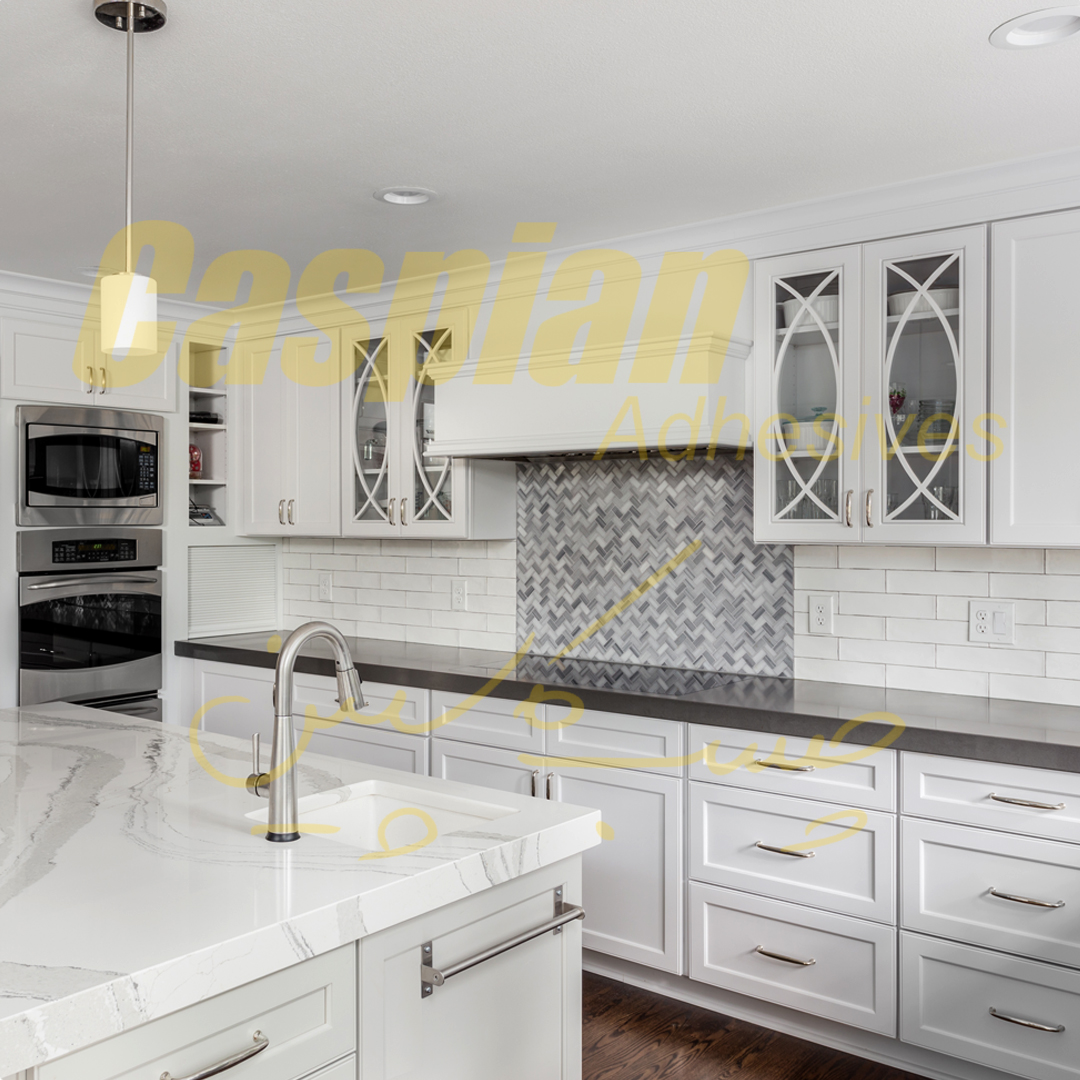
22 Feb How to Clean Silicone Caulk Off Laminate Counters
Silicone caulk is a great adhesive and sealant, and it’s completely waterproof, so it’s widely used to seal the edges of countertops where they meet the wall. It lasts for a long time — but not forever. So, when old caulk becomes discolored and unsightly, it has to be removed before you can re-caulk. Although some products, such as Dap Silicone-Be-Gone, will soften it for easier removal, no product will dissolve it, and you almost always have to resort to scraping and pulling.
Sometimes, stray caulk makes it onto the surface of the countertop, and if it’s allowed to cure, it can be difficult to remove. If the countertop material is laminate, you have to be extra careful when scraping off the caulk because laminates are fairly susceptible to scratching. The standard removal procedure for silicone caulk involves a softening agent, a scraper or razor blade, a pair of pliers and your fingers.
What Is the Best Silicone Remover?
Because it contains acetic acid, uncured silicone caulk has an odor similar to vinegar — and in fact, you can use vinegar to soften it once it has cured. Vinegar is also great for removing hard water stains on laminate countertops. You can also soften cured silicone with one of a number of silicone softeners on the market, including Silicone-Be-Gone, Goo Gone and Lift Off Caulk Remover. Isopropyl alcohol, mineral spirits and spray lubricants, such as WD-40, also work.
None of these products actually dissolves silicone because, due to the nature of the curing process, that’s impossible. Some products can digest silicone, but these are intended for industrial use and not for around the house. So, keep in mind that when you buy a silicone remover, you’re actually buying a softener. Though it makes the job easier, silicone caulk cleanup necessarily involves scraping, cutting and pulling.
The Procedure for Silicone Caulk Cleanup
If you decide to treat the silicone with a softener, you need to keep your chosen chemical in contact with the caulk long enough for it to work, which could be anywhere from several minutes to an hour or more. If you’re using a commercial product, follow the instructions on the label. For household softeners, such as vinegar, the best approach is to moisten a rag, cover the caulk with the rag and let it sit.
You can also soften silicone caulk with heat in lieu of using a chemical. Run a hair dryer set to low heat over the caulk for several minutes until it softens up.
The bulk of the procedure involves cutting and scraping. Cut the caulk into sections with a sharp putty knife or a razor blade, then work the blade or tool under the sections you cut and pry them up. When the caulk breaks into sections, pull the sections off the laminate surface with pliers or your fingers.
Cleaning Up the Residue
After the bulk of the caulk is gone, a thin film of residue usually remains. This is much easier to remove if you use a softening agent, such as mineral spirits, but the job still involves a lot of scraping and pulling. A sharp pull scraper comes in handy, as long as you use it correctly.
Run the scraper lightly over the surface of the silicone residue to curl it into small rolls and balls that you can brush away with your fingers. You can bear down with moderate pressure to remove tough sections without fear of damaging the laminate, as long as you keep the scraper flat. If you allow the corners of the blade to dig into the surface, however, scratches are bound to occur, so be careful.
source: https://www.hunker.com/13422219/how-to-clean-silicone-caulk-off-laminate-counters
